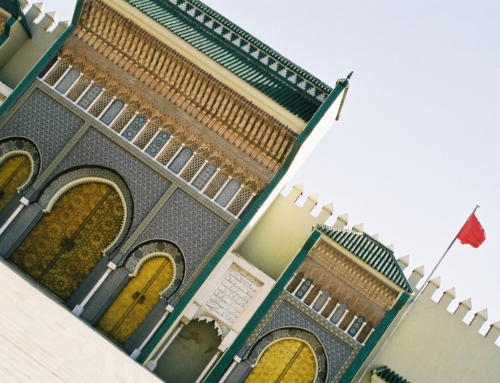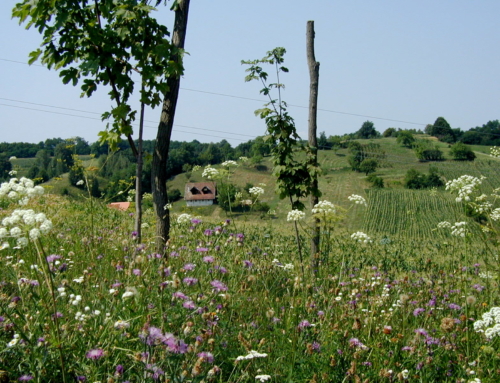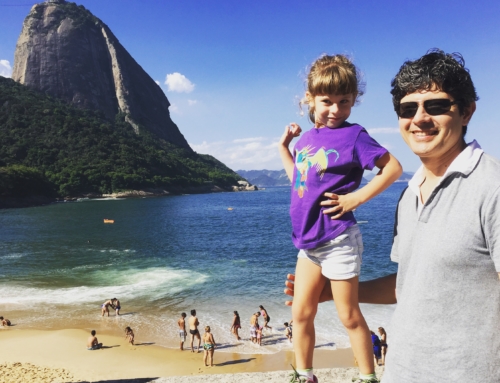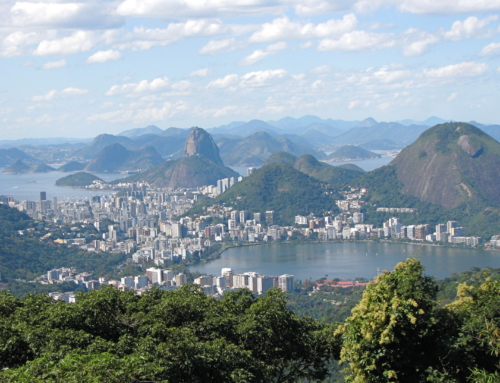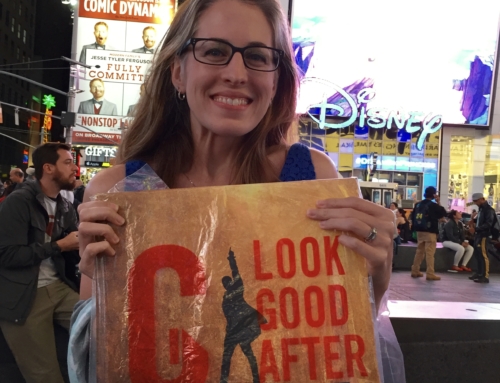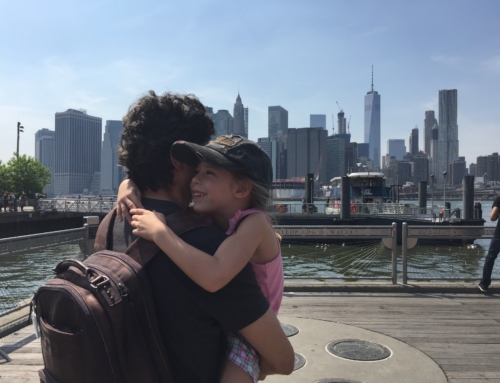Throwback to 2004 when I studied abroad in Jaipur, India. I remember that semester so vividly it doesn’t feel like 13 years ago. I wrote this essay in 2007 for the digital magazine Glimpse, which like my time in Jaipur is now a fond memory.
 Walking down a street in Jaipur, India, I heard what had become a familiar recorded political message blasting out over loudspeakers. The message was imploring people to vote for a particular party in the upcoming election. I turned the corner, expecting to see one of what I had affectionately termed the “propaganda trucks.” But instead of a truck, I saw a man on a cycle rickshaw that looked about ready to fall apart at the next pothole it hit. The rickshaw had two loudspeakers, duct-taped to the handlebars, and dangling wires that crisscrossed back to a stereo, which was also secured to the rickshaw with duct tape. I watched the man pedal by, the squeaking of the rickshaw drowned out by the message blasting repeatedly from the speakers. I was so moved by one of the most humble, yet dedicated, displays of democracy I had ever seen that I decided to take advantage of being in India during a parliamentary election to research local political campaigns.
Walking down a street in Jaipur, India, I heard what had become a familiar recorded political message blasting out over loudspeakers. The message was imploring people to vote for a particular party in the upcoming election. I turned the corner, expecting to see one of what I had affectionately termed the “propaganda trucks.” But instead of a truck, I saw a man on a cycle rickshaw that looked about ready to fall apart at the next pothole it hit. The rickshaw had two loudspeakers, duct-taped to the handlebars, and dangling wires that crisscrossed back to a stereo, which was also secured to the rickshaw with duct tape. I watched the man pedal by, the squeaking of the rickshaw drowned out by the message blasting repeatedly from the speakers. I was so moved by one of the most humble, yet dedicated, displays of democracy I had ever seen that I decided to take advantage of being in India during a parliamentary election to research local political campaigns.
To begin my research, I followed a candidate during a day of campaigning in downtown Jaipur. A friend drove me to the market where the candidate was scheduled to make his first speech of the day. It was 7:00 a.m. and I was still brushing sleep from my eyes, but the market was already alive with people. A group of men was tossing heads of cabbage off a truck. Another group was passing some sort of melon down a line from a truck bed to the stand. Vendors were shouting, women were bargaining, chickens were clucking, and cows—well, they stayed quiet, but were standing resolutely in the middle of the street, inconveniencing everyone. The market was a swirl of activity amidst the brilliantly colored fruits and saris, making me feel as though I were walking through a kaleidoscope. A very noisy kaleidoscope. In the center of the market was a small stage decorated with marigolds, roses, and saffron and green Congress party banners.
 The candidate arrived about 7:40 a.m., and by 8:00 he had given his speech and started a small riot in the market. The crowd that gathered during his speech had been completely passive, almost indifferent to what was being said, but at the end of the speech some aides brought out boxes of sweets. When the first sweet was handed to a woman in the front of the audience, the impassive crowd suddenly turned violent, surging forward as if on command. Elbows dug into rib cages. Shirts were ripped. People were shoved to the ground. The noise of the market was now drowned out by the yelling of people desperately groping for a single piece of candy. The aides tossed the boxes of sweets into the air over the crowd and hastily retreated. I don’t know whether the sweets actually ended up in anyone’s mouth, or whether anyone ended up getting hurt. I didn’t get the chance to find out. My friend grabbed my elbow, pulling me off the stage.
The candidate arrived about 7:40 a.m., and by 8:00 he had given his speech and started a small riot in the market. The crowd that gathered during his speech had been completely passive, almost indifferent to what was being said, but at the end of the speech some aides brought out boxes of sweets. When the first sweet was handed to a woman in the front of the audience, the impassive crowd suddenly turned violent, surging forward as if on command. Elbows dug into rib cages. Shirts were ripped. People were shoved to the ground. The noise of the market was now drowned out by the yelling of people desperately groping for a single piece of candy. The aides tossed the boxes of sweets into the air over the crowd and hastily retreated. I don’t know whether the sweets actually ended up in anyone’s mouth, or whether anyone ended up getting hurt. I didn’t get the chance to find out. My friend grabbed my elbow, pulling me off the stage.
 After successfully disrupting the daily routine of the market, it was off to a march and rally through the heart of downtown Jaipur. As I trailed behind the candidate I learned that a successful mobile political rally in India must include four things: 1) the previously mentioned “propaganda truck,” brightly decorated, and spewing party slogans through loudspeakers, 2) a group of school children with a sweet song to sing and rose petals to throw (if the kids can be in uniforms, they earn extra points on the “adorable scale”), 3) a memorable stunt of some kind that can be pictured in the newspaper, i.e. milking a cow, and 4) a passionate group of youths who can wave flags and chant nonstop for the entire three-hour walk. Combine these elements and a crowd of hundreds is guaranteed to have developed by the time a candidate has reached the platform where he will give his speech.
After successfully disrupting the daily routine of the market, it was off to a march and rally through the heart of downtown Jaipur. As I trailed behind the candidate I learned that a successful mobile political rally in India must include four things: 1) the previously mentioned “propaganda truck,” brightly decorated, and spewing party slogans through loudspeakers, 2) a group of school children with a sweet song to sing and rose petals to throw (if the kids can be in uniforms, they earn extra points on the “adorable scale”), 3) a memorable stunt of some kind that can be pictured in the newspaper, i.e. milking a cow, and 4) a passionate group of youths who can wave flags and chant nonstop for the entire three-hour walk. Combine these elements and a crowd of hundreds is guaranteed to have developed by the time a candidate has reached the platform where he will give his speech.

Some lovely school children who literally showered the candidate with rose petals. I’m sure it was purely their own initiative.
After walking in the intense Indian heat for over an hour, enough time for everyone to have giant sweat stains under their arms, we finally reached the platform. Some of the party leaders invited me to stand with them, and although standing on the stage put me a little closer to the campaign than I had wanted, I thought back to the small riot we had started in the marketplace earlier that morning and decided it was definitely better to be above the large crowd.
The candidate finished his speech and the cheering crowd parted to allow him to walk to one of the propaganda trucks and climb on top, where there was a microphone hooked up to the truck’s loudspeakers. One of the party leaders turned and asked me if I wanted to go on top of the truck too. I definitely did not want to go on top of the truck. I was there to research a campaign, not endorse the man. I thought it somewhat unethical, not to mention awkward, to stand with him on the truck.
I was explaining my feelings on the matter when I heard the candidate say “America” in the midst of a bunch of Hindi I didn’t understand. Hundreds of people simultaneously turned and looked at me. Well, so much for non-participatory observation. In a quick analysis of the situation I decided it might not be wise to insult the candidate in front of 300 of his supporters. My decision was helped by a path suddenly clearing in the middle of the sea of people and two leaders taking my elbows and propelling me to the ladder on the truck. With many reservations, I climbed onto to the truck’s roof and stood next to the candidate.

We drove around to the point I had absolutely no idea where I was. I admit to second guessing my earlier decision making at that point.
We spent the rest of the afternoon riding around stopping in every new neighborhood for the candidate to make a speech. The lack of seat belt, roof, walls or anything else designed to keep those of on top of the truck from falling off made it difficult for me to take notes. I spent most of the drive clutching the single, skinny guardrail that ran around the edge of the roof. I didn’t know where I was. I didn’t know anyone else in the truck. I didn’t know how I was getting back home. I was grateful to the candidate for letting me tag along but I found myself thinking it might have been better to research a topic that kept me in a library on solid ground.
Fortunately, I made it off the truck, with only one awkward moment right at the end when a party leader asked if I would say a few words about the candidate into the microphone. At first I thought he was kidding but he pulled out a piece of paper with a few sentences written in Hindi and told me he would teach me exactly what to say. I had started the day as an impartial observer and ended the day being asked to give a public endorsement over the loudspeakers. I was not about to support a perfect stranger or give a statement I didn’t even understand. At the risk of offending my hosts, I politely declined and climbed off the truck at the next stop.
 While the campaigns I observed in India were similar in many ways to U.S. political campaigns, they were ultimately, unmistakably Indian. There were the superficial differences: the garlands, turbans, saffron and green banners, the traditional white dress worn by male candidates and the saris worn by women candidates. On a deeper level, the wide variety of political parties vying for power reflects the wide variety of ethnicities, religions and linguistic groups that all live within the world’s largest democracy. A three-hour walking tour is the only way to reach a constituency that does not own televisions or radios. While India currently celebrates its technological advances, I believe its greatest achievement is bringing democracy to one billion citizens—democracy that is delivered when necessary by cycle rickshaw.
While the campaigns I observed in India were similar in many ways to U.S. political campaigns, they were ultimately, unmistakably Indian. There were the superficial differences: the garlands, turbans, saffron and green banners, the traditional white dress worn by male candidates and the saris worn by women candidates. On a deeper level, the wide variety of political parties vying for power reflects the wide variety of ethnicities, religions and linguistic groups that all live within the world’s largest democracy. A three-hour walking tour is the only way to reach a constituency that does not own televisions or radios. While India currently celebrates its technological advances, I believe its greatest achievement is bringing democracy to one billion citizens—democracy that is delivered when necessary by cycle rickshaw.
